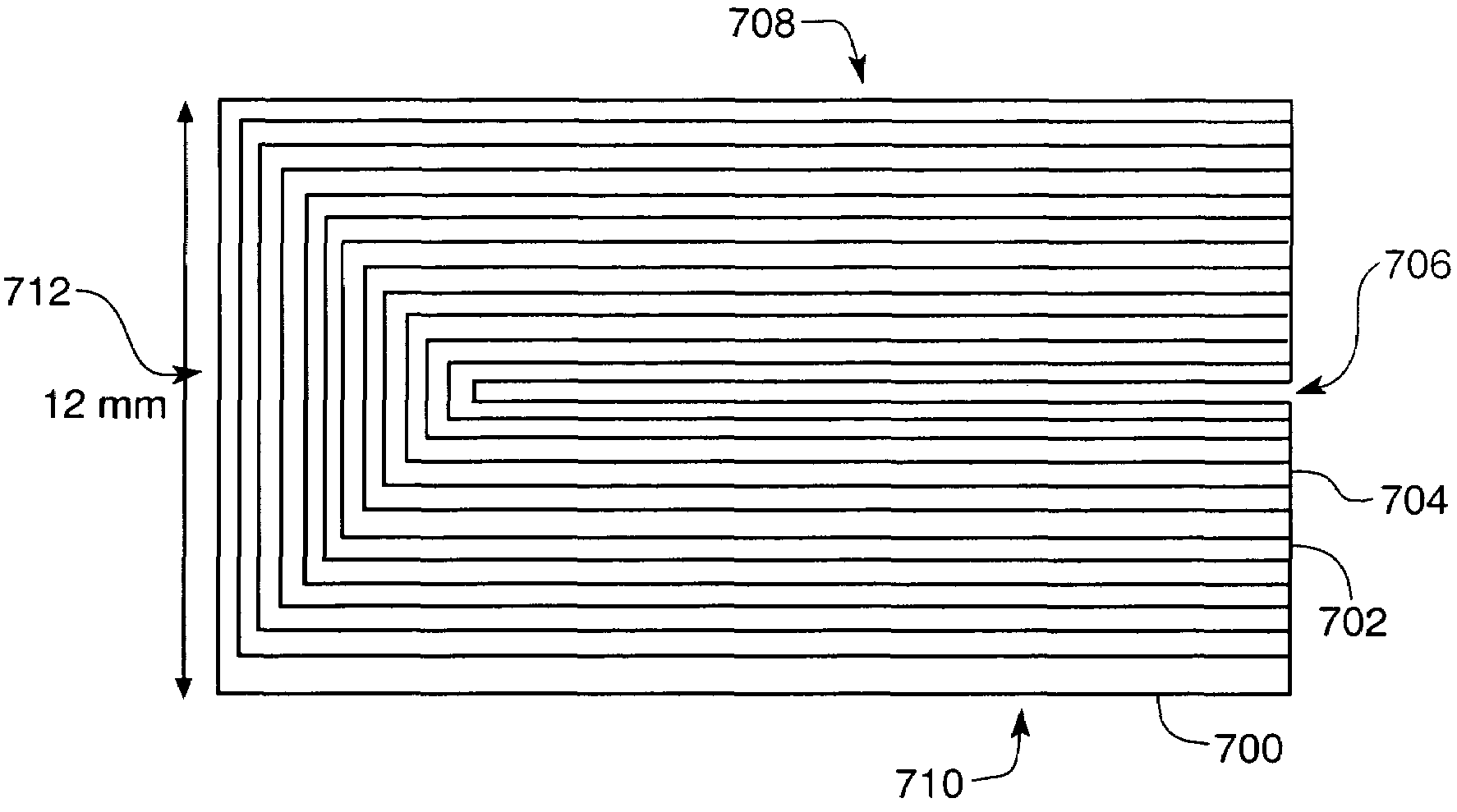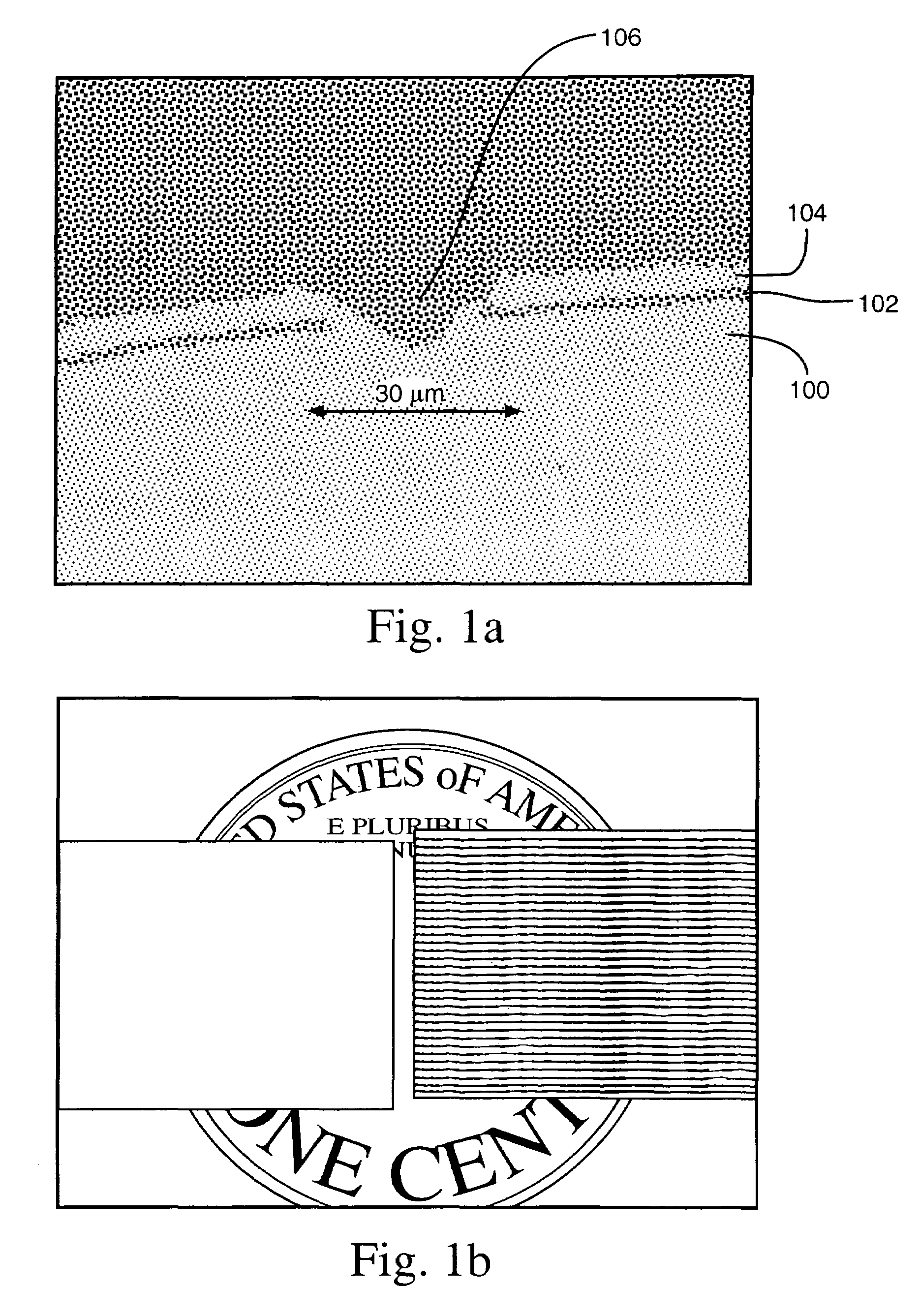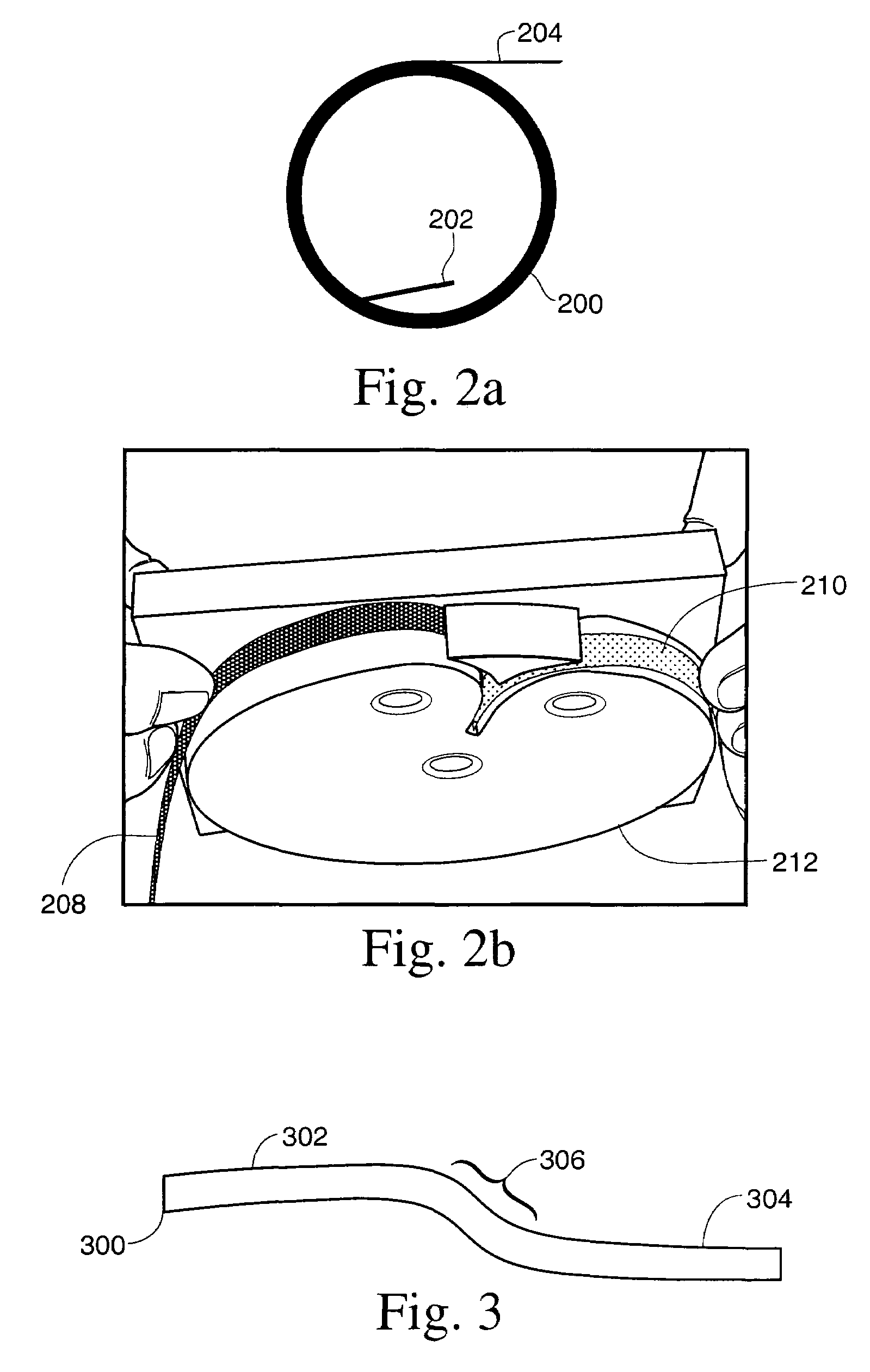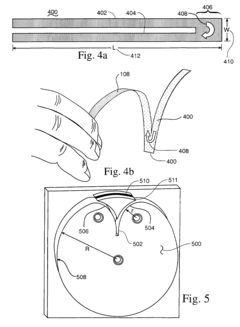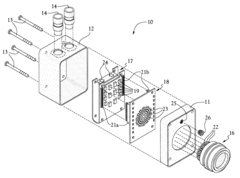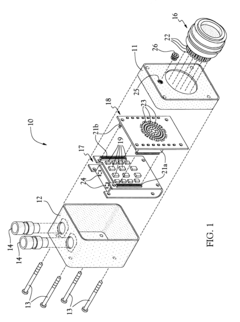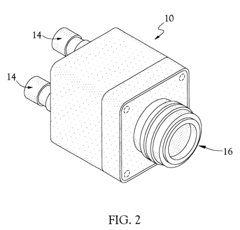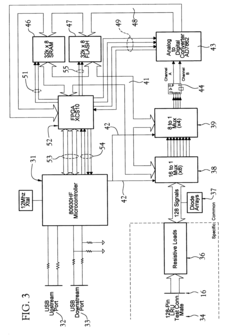Hastelloy Technology Driving Innovation in Military Equipment
JUL 10, 20258 MIN READ
Generate Your Research Report Instantly with AI Agent
Patsnap Eureka helps you evaluate technical feasibility & market potential.
Hastelloy Evolution and Military Applications
Hastelloy, a family of nickel-chromium-based superalloys, has undergone significant evolution since its inception in the 1920s. Initially developed for corrosion resistance in chemical processing industries, Hastelloy has found increasing applications in military equipment due to its exceptional properties. The alloy's journey from industrial use to military applications represents a remarkable technological progression.
In the early stages, Hastelloy was primarily used in chemical plants and oil refineries. However, its unique combination of high strength, excellent corrosion resistance, and ability to withstand extreme temperatures soon caught the attention of military engineers. The 1950s and 1960s saw the first significant military applications of Hastelloy, particularly in aircraft engines and exhaust systems.
As military technology advanced, so did the demands placed on materials. Hastelloy's composition was continuously refined to meet these evolving requirements. The introduction of new alloying elements and improved manufacturing processes led to the development of various Hastelloy grades, each tailored for specific military applications. For instance, Hastelloy X became a preferred material for jet engine components due to its superior oxidation resistance at high temperatures.
The 1980s and 1990s marked a period of rapid innovation in Hastelloy technology. Advanced grades like Hastelloy C-22 and C-276 were developed, offering enhanced resistance to pitting and crevice corrosion. These alloys found applications in naval systems, particularly in submarine components exposed to harsh marine environments.
In recent years, the focus has shifted towards optimizing Hastelloy for additive manufacturing processes. This development has opened up new possibilities for creating complex, lightweight structures for military equipment. 3D-printed Hastelloy components are now being explored for use in next-generation aircraft and armored vehicles, offering improved performance and reduced weight.
The evolution of Hastelloy has also paralleled advancements in military propulsion systems. Modern missile technology, for example, relies heavily on materials that can withstand extreme heat and corrosive environments. Hastelloy's unique properties make it an ideal choice for critical components in these systems, contributing to increased range and reliability.
Looking ahead, the ongoing development of Hastelloy is likely to play a crucial role in emerging military technologies. From hypersonic vehicles to advanced energy weapons, the demand for materials that can perform under extreme conditions continues to grow. As such, Hastelloy remains at the forefront of materials science, driving innovation in military equipment and shaping the future of defense technology.
In the early stages, Hastelloy was primarily used in chemical plants and oil refineries. However, its unique combination of high strength, excellent corrosion resistance, and ability to withstand extreme temperatures soon caught the attention of military engineers. The 1950s and 1960s saw the first significant military applications of Hastelloy, particularly in aircraft engines and exhaust systems.
As military technology advanced, so did the demands placed on materials. Hastelloy's composition was continuously refined to meet these evolving requirements. The introduction of new alloying elements and improved manufacturing processes led to the development of various Hastelloy grades, each tailored for specific military applications. For instance, Hastelloy X became a preferred material for jet engine components due to its superior oxidation resistance at high temperatures.
The 1980s and 1990s marked a period of rapid innovation in Hastelloy technology. Advanced grades like Hastelloy C-22 and C-276 were developed, offering enhanced resistance to pitting and crevice corrosion. These alloys found applications in naval systems, particularly in submarine components exposed to harsh marine environments.
In recent years, the focus has shifted towards optimizing Hastelloy for additive manufacturing processes. This development has opened up new possibilities for creating complex, lightweight structures for military equipment. 3D-printed Hastelloy components are now being explored for use in next-generation aircraft and armored vehicles, offering improved performance and reduced weight.
The evolution of Hastelloy has also paralleled advancements in military propulsion systems. Modern missile technology, for example, relies heavily on materials that can withstand extreme heat and corrosive environments. Hastelloy's unique properties make it an ideal choice for critical components in these systems, contributing to increased range and reliability.
Looking ahead, the ongoing development of Hastelloy is likely to play a crucial role in emerging military technologies. From hypersonic vehicles to advanced energy weapons, the demand for materials that can perform under extreme conditions continues to grow. As such, Hastelloy remains at the forefront of materials science, driving innovation in military equipment and shaping the future of defense technology.
Defense Market Demand Analysis
The defense market's demand for Hastelloy technology in military equipment has been steadily increasing due to its exceptional properties and performance in harsh environments. Hastelloy, a family of nickel-chromium-molybdenum superalloys, offers superior corrosion resistance, high-temperature strength, and excellent durability, making it ideal for various military applications.
In recent years, the global defense industry has witnessed a growing emphasis on advanced materials that can withstand extreme conditions while maintaining structural integrity. This trend has led to a surge in demand for Hastelloy-based components in military equipment, particularly in naval and aerospace sectors.
Naval applications have seen a significant uptick in Hastelloy usage, especially in submarine and surface vessel components exposed to seawater and corrosive environments. The material's resistance to pitting and crevice corrosion has made it invaluable for critical systems such as propulsion components, heat exchangers, and exhaust systems.
In aerospace and missile defense systems, Hastelloy's high-temperature strength and oxidation resistance have driven its adoption in jet engine components, rocket nozzles, and thermal protection systems. The material's ability to maintain its properties under extreme heat and pressure has made it essential for next-generation aircraft and hypersonic missile technologies.
The demand for Hastelloy in military ground vehicles has also increased, particularly in exhaust systems, turbocharger components, and armor plating. Its resistance to chemical warfare agents and ability to withstand blast impacts have made it a preferred material for protective equipment and vehicle armor upgrades.
Furthermore, the growing focus on unmanned systems and autonomous platforms in military operations has created new opportunities for Hastelloy applications. These systems often require materials that can perform reliably in diverse and challenging environments without frequent maintenance, aligning perfectly with Hastelloy's properties.
The defense market's shift towards more advanced, lightweight, and durable materials has positioned Hastelloy as a key enabler for innovation in military equipment. As armed forces worldwide seek to enhance their capabilities and operational effectiveness, the demand for Hastelloy-based solutions is expected to continue its upward trajectory.
However, the high cost of Hastelloy compared to conventional materials remains a challenge for widespread adoption. This has led to increased research and development efforts aimed at optimizing Hastelloy alloy compositions and manufacturing processes to improve cost-effectiveness while maintaining or enhancing performance characteristics.
In recent years, the global defense industry has witnessed a growing emphasis on advanced materials that can withstand extreme conditions while maintaining structural integrity. This trend has led to a surge in demand for Hastelloy-based components in military equipment, particularly in naval and aerospace sectors.
Naval applications have seen a significant uptick in Hastelloy usage, especially in submarine and surface vessel components exposed to seawater and corrosive environments. The material's resistance to pitting and crevice corrosion has made it invaluable for critical systems such as propulsion components, heat exchangers, and exhaust systems.
In aerospace and missile defense systems, Hastelloy's high-temperature strength and oxidation resistance have driven its adoption in jet engine components, rocket nozzles, and thermal protection systems. The material's ability to maintain its properties under extreme heat and pressure has made it essential for next-generation aircraft and hypersonic missile technologies.
The demand for Hastelloy in military ground vehicles has also increased, particularly in exhaust systems, turbocharger components, and armor plating. Its resistance to chemical warfare agents and ability to withstand blast impacts have made it a preferred material for protective equipment and vehicle armor upgrades.
Furthermore, the growing focus on unmanned systems and autonomous platforms in military operations has created new opportunities for Hastelloy applications. These systems often require materials that can perform reliably in diverse and challenging environments without frequent maintenance, aligning perfectly with Hastelloy's properties.
The defense market's shift towards more advanced, lightweight, and durable materials has positioned Hastelloy as a key enabler for innovation in military equipment. As armed forces worldwide seek to enhance their capabilities and operational effectiveness, the demand for Hastelloy-based solutions is expected to continue its upward trajectory.
However, the high cost of Hastelloy compared to conventional materials remains a challenge for widespread adoption. This has led to increased research and development efforts aimed at optimizing Hastelloy alloy compositions and manufacturing processes to improve cost-effectiveness while maintaining or enhancing performance characteristics.
Hastelloy Challenges in Military Use
While Hastelloy alloys offer exceptional corrosion resistance and strength, their application in military equipment presents several challenges. The high cost of raw materials and complex manufacturing processes make Hastelloy components significantly more expensive than traditional alternatives. This cost factor often limits widespread adoption, particularly for large-scale equipment or in situations where budget constraints are a primary concern.
The machining of Hastelloy alloys poses another significant challenge. These materials are known for their high work-hardening rate and low thermal conductivity, which can lead to rapid tool wear and increased production time. This not only adds to the overall cost but also complicates the manufacturing process, potentially causing delays in equipment production and maintenance.
Welding Hastelloy components presents unique difficulties due to the alloy's susceptibility to hot cracking and the formation of detrimental precipitates in the heat-affected zone. These issues can compromise the integrity of welded joints, potentially leading to premature failure in critical military applications where reliability is paramount.
The high density of Hastelloy alloys, while beneficial for certain applications, can be a drawback in military equipment where weight is a crucial factor. This is particularly relevant in aerospace and portable military gear, where every gram counts in terms of fuel efficiency and soldier mobility.
Another challenge lies in the long-term performance of Hastelloy in extreme military environments. While the alloy exhibits excellent corrosion resistance in many scenarios, prolonged exposure to certain aggressive chemicals or extreme temperatures may still lead to degradation over time. This necessitates careful consideration of specific operational conditions and potential material interactions.
The limited availability of Hastelloy compared to more common materials can also pose supply chain challenges for military equipment manufacturers. This scarcity may lead to longer lead times and potential production bottlenecks, which can be problematic in scenarios requiring rapid equipment deployment or replacement.
Lastly, the integration of Hastelloy components with other materials in complex military systems can present compatibility issues. Differences in thermal expansion, electrochemical properties, and mechanical characteristics must be carefully managed to ensure optimal performance and longevity of the equipment.
The machining of Hastelloy alloys poses another significant challenge. These materials are known for their high work-hardening rate and low thermal conductivity, which can lead to rapid tool wear and increased production time. This not only adds to the overall cost but also complicates the manufacturing process, potentially causing delays in equipment production and maintenance.
Welding Hastelloy components presents unique difficulties due to the alloy's susceptibility to hot cracking and the formation of detrimental precipitates in the heat-affected zone. These issues can compromise the integrity of welded joints, potentially leading to premature failure in critical military applications where reliability is paramount.
The high density of Hastelloy alloys, while beneficial for certain applications, can be a drawback in military equipment where weight is a crucial factor. This is particularly relevant in aerospace and portable military gear, where every gram counts in terms of fuel efficiency and soldier mobility.
Another challenge lies in the long-term performance of Hastelloy in extreme military environments. While the alloy exhibits excellent corrosion resistance in many scenarios, prolonged exposure to certain aggressive chemicals or extreme temperatures may still lead to degradation over time. This necessitates careful consideration of specific operational conditions and potential material interactions.
The limited availability of Hastelloy compared to more common materials can also pose supply chain challenges for military equipment manufacturers. This scarcity may lead to longer lead times and potential production bottlenecks, which can be problematic in scenarios requiring rapid equipment deployment or replacement.
Lastly, the integration of Hastelloy components with other materials in complex military systems can present compatibility issues. Differences in thermal expansion, electrochemical properties, and mechanical characteristics must be carefully managed to ensure optimal performance and longevity of the equipment.
Current Hastelloy Solutions for Military Equipment
01 Composition and properties of Hastelloy alloys
Hastelloy is a family of nickel-based superalloys known for their excellent corrosion resistance and high-temperature strength. These alloys typically contain varying amounts of chromium, molybdenum, and other elements to enhance their performance in extreme environments. The specific composition and properties can be tailored for different applications, such as chemical processing, aerospace, and nuclear industries.- Composition and properties of Hastelloy alloys: Hastelloy is a family of nickel-based superalloys known for their excellent corrosion resistance and high-temperature strength. These alloys typically contain varying amounts of chromium, molybdenum, and other elements to enhance their performance in harsh environments. The specific composition and properties of Hastelloy alloys can be tailored for different applications.
- Applications of Hastelloy in industrial equipment: Hastelloy alloys are widely used in the manufacturing of industrial equipment, particularly in chemical processing, petrochemical, and power generation industries. They are employed in the fabrication of components such as heat exchangers, reactors, and piping systems that are exposed to corrosive environments and high temperatures.
- Welding and fabrication techniques for Hastelloy: Specialized welding and fabrication techniques are required for Hastelloy alloys to maintain their unique properties. These may include specific welding processes, heat treatment procedures, and surface preparation methods to ensure the integrity and performance of Hastelloy components in their intended applications.
- Surface treatment and coating of Hastelloy: Various surface treatment and coating methods can be applied to Hastelloy components to further enhance their properties or provide additional functionality. These treatments may include electroplating, thermal spraying, or the application of specialized coatings to improve wear resistance, reduce friction, or provide additional corrosion protection.
- Development of new Hastelloy grades and variants: Ongoing research and development efforts focus on creating new grades and variants of Hastelloy alloys with improved properties or tailored characteristics for specific applications. This includes modifying the alloy composition, optimizing heat treatment processes, or developing hybrid materials that combine Hastelloy with other materials to achieve enhanced performance.
02 Manufacturing processes for Hastelloy components
Various manufacturing processes are employed to produce Hastelloy components, including casting, forging, and powder metallurgy techniques. Advanced manufacturing methods such as additive manufacturing and precision machining are also used to create complex Hastelloy parts. These processes are optimized to maintain the alloy's desirable properties and ensure high-quality finished products.Expand Specific Solutions03 Applications of Hastelloy in corrosive environments
Hastelloy alloys are widely used in highly corrosive environments due to their exceptional resistance to various forms of chemical attack. They are employed in the production of chemical processing equipment, heat exchangers, and piping systems exposed to aggressive media. The alloys' ability to withstand corrosion at elevated temperatures makes them particularly valuable in industries such as oil and gas, petrochemical, and waste treatment.Expand Specific Solutions04 Hastelloy in high-temperature applications
The high-temperature strength and oxidation resistance of Hastelloy alloys make them suitable for use in extreme thermal conditions. They are utilized in gas turbine components, furnace equipment, and other high-temperature industrial applications. The alloys maintain their mechanical properties and resist creep at elevated temperatures, contributing to improved efficiency and longevity of equipment in these demanding environments.Expand Specific Solutions05 Surface treatment and coating of Hastelloy
Various surface treatment and coating techniques are applied to Hastelloy components to further enhance their performance characteristics. These processes may include heat treatments, nitriding, or the application of specialized coatings to improve wear resistance, reduce friction, or provide additional corrosion protection. Such treatments can extend the service life of Hastelloy parts and expand their range of applications in challenging industrial settings.Expand Specific Solutions
Key Players in Hastelloy Manufacturing
The Hastelloy technology market in military equipment is in a growth phase, driven by increasing demand for high-performance materials in defense applications. The market size is expanding, with major players like Raytheon, Honeywell, and BAE Systems investing in research and development. Technologically, Hastelloy alloys are mature but continue to evolve, with companies like Jiangsu Hanqing Special Alloy Co Ltd and DePuy Synthes Products, Inc. focusing on improving corrosion resistance and strength for specific military applications. The competitive landscape is characterized by a mix of established defense contractors and specialized materials manufacturers, each leveraging their expertise to gain market share.
Raytheon Co.
Technical Solution: Raytheon has been a key player in applying Hastelloy technology to missile defense systems and radar equipment. They have developed advanced welding techniques for Hastelloy, enabling the creation of complex, lightweight structures for military applications[10]. Raytheon's approach includes using Hastelloy in critical components of missile guidance systems, leveraging its stability at high temperatures and resistance to oxidation[11]. They have also pioneered the use of Hastelloy in phased array radar systems, improving their reliability and performance in harsh environmental conditions[12].
Strengths: Expertise in Hastelloy welding techniques, strong focus on missile defense applications, and proven track record in radar system development. Weaknesses: Potential limitations in sourcing large quantities of Hastelloy for mass production and higher costs compared to conventional materials.
The Boeing Co.
Technical Solution: Boeing has integrated Hastelloy technology into its military aircraft and aerospace systems. They have developed proprietary heat treatment processes for Hastelloy components, enhancing their durability and performance in high-stress environments[4]. Boeing's approach includes using Hastelloy in exhaust systems, fuel components, and structural elements of military aircraft, particularly those operating in corrosive marine environments[5]. They have also pioneered the use of Hastelloy in advanced sensor housings for reconnaissance aircraft, providing superior protection against extreme temperatures and chemical exposure[6].
Strengths: Strong integration of Hastelloy in aerospace applications, proprietary heat treatment processes, and expertise in corrosion-resistant designs. Weaknesses: Potential limitations in scaling production for large military contracts and dependency on specialized suppliers.
Hastelloy Innovations for Defense Applications
Machinery windings of yttrium barium copper oxide and related coated conductor
PatentInactiveUS7566684B1
Innovation
- The use of second generation superconductor materials with a superconductor film layer divided into segregated parallel filament striations and specific winding configurations, such as double pancake coils and bending twists, to reduce hysteresis and coupling losses, and accommodate mechanical strain limitations.
Measurement module and system for monitoring the status of armored vehicle electronic components
PatentInactiveUS6697763B1
Innovation
- A system of interconnected measurement modules that collect data from electronic subsystems via a USB bus, allowing for real-time monitoring and analysis of Line Replaceable Units (LRUs) while the vehicle is operational, using microcontrollers and high-speed USB connectivity to a host computing device.
Strategic Importance of Hastelloy in Defense
Hastelloy alloys have emerged as a critical material in the defense sector, offering unparalleled performance in extreme environments. These nickel-chromium-based superalloys possess exceptional resistance to corrosion, oxidation, and high-temperature degradation, making them indispensable for various military applications.
In aerospace and missile systems, Hastelloy components play a vital role in enhancing durability and reliability. The alloy's ability to maintain structural integrity under extreme heat and pressure conditions makes it ideal for jet engine parts, rocket nozzles, and exhaust systems. This translates to improved performance and extended operational life of military aircraft and missiles.
Naval applications benefit significantly from Hastelloy's corrosion resistance properties. In submarine and ship construction, Hastelloy is used for critical components exposed to seawater and harsh marine environments. This includes heat exchangers, valves, and piping systems, where the alloy's resistance to pitting and crevice corrosion ensures long-term reliability and reduced maintenance requirements.
For land-based military equipment, Hastelloy finds applications in armored vehicle components, particularly in areas exposed to extreme heat or corrosive chemicals. The alloy's durability contributes to enhanced protection and longevity of these critical assets in combat situations.
In the realm of chemical and biological warfare defense, Hastelloy's resistance to a wide range of aggressive chemicals makes it an essential material for protective equipment and decontamination systems. Its use in storage and handling systems for hazardous materials ensures the safety of personnel and the integrity of sensitive operations.
The strategic importance of Hastelloy extends beyond immediate military applications. Its use in advanced manufacturing processes for defense equipment contributes to overall technological superiority. The alloy's unique properties enable the development of next-generation weapons systems and defensive technologies that can provide a significant tactical advantage on the battlefield.
Furthermore, Hastelloy's role in military research and development cannot be overstated. Its versatility and performance characteristics make it a preferred material for prototyping and testing new defense technologies. This accelerates innovation cycles and helps in pushing the boundaries of what is possible in military equipment design.
In aerospace and missile systems, Hastelloy components play a vital role in enhancing durability and reliability. The alloy's ability to maintain structural integrity under extreme heat and pressure conditions makes it ideal for jet engine parts, rocket nozzles, and exhaust systems. This translates to improved performance and extended operational life of military aircraft and missiles.
Naval applications benefit significantly from Hastelloy's corrosion resistance properties. In submarine and ship construction, Hastelloy is used for critical components exposed to seawater and harsh marine environments. This includes heat exchangers, valves, and piping systems, where the alloy's resistance to pitting and crevice corrosion ensures long-term reliability and reduced maintenance requirements.
For land-based military equipment, Hastelloy finds applications in armored vehicle components, particularly in areas exposed to extreme heat or corrosive chemicals. The alloy's durability contributes to enhanced protection and longevity of these critical assets in combat situations.
In the realm of chemical and biological warfare defense, Hastelloy's resistance to a wide range of aggressive chemicals makes it an essential material for protective equipment and decontamination systems. Its use in storage and handling systems for hazardous materials ensures the safety of personnel and the integrity of sensitive operations.
The strategic importance of Hastelloy extends beyond immediate military applications. Its use in advanced manufacturing processes for defense equipment contributes to overall technological superiority. The alloy's unique properties enable the development of next-generation weapons systems and defensive technologies that can provide a significant tactical advantage on the battlefield.
Furthermore, Hastelloy's role in military research and development cannot be overstated. Its versatility and performance characteristics make it a preferred material for prototyping and testing new defense technologies. This accelerates innovation cycles and helps in pushing the boundaries of what is possible in military equipment design.
Environmental Impact of Hastelloy Production
The production of Hastelloy, a high-performance nickel-based alloy, has significant environmental implications that warrant careful consideration. The manufacturing process involves energy-intensive operations, including mining, refining, and alloying, which contribute to greenhouse gas emissions and carbon footprint. The extraction of raw materials, particularly nickel and chromium, can lead to habitat disruption and soil degradation in mining areas. Furthermore, the refining process generates waste products and emissions that require proper management to minimize environmental impact.
Water usage is another critical environmental factor in Hastelloy production. The manufacturing process requires substantial amounts of water for cooling and processing, potentially straining local water resources in production regions. Proper water management and recycling systems are essential to mitigate this impact and ensure sustainable production practices.
The use of chemicals in the production process, including acids for metal treatment and cleaning agents, poses potential risks to soil and water quality if not properly handled and disposed of. Implementing stringent waste management protocols and adopting cleaner production technologies can help reduce these environmental risks associated with Hastelloy manufacturing.
On the positive side, the durability and corrosion resistance of Hastelloy contribute to the longevity of military equipment, potentially reducing the need for frequent replacements and the associated environmental impact of manufacturing new components. Additionally, the alloy's resistance to extreme conditions allows for the development of more efficient and environmentally friendly military technologies, such as improved fuel systems and exhaust components that reduce emissions.
The recycling potential of Hastelloy is an important consideration in its environmental impact assessment. The high value of its constituent elements incentivizes recycling efforts, which can significantly reduce the demand for primary raw materials and the associated environmental burdens of mining and refining. Developing efficient recycling processes for Hastelloy and promoting circular economy principles in military equipment lifecycle management can further mitigate the environmental footprint of this technology.
As the demand for Hastelloy in military applications grows, there is an increasing focus on developing more sustainable production methods. Research into alternative alloying processes, such as powder metallurgy and additive manufacturing, shows promise in reducing energy consumption and material waste. These innovative approaches, combined with ongoing efforts to improve energy efficiency in traditional manufacturing processes, are crucial steps towards minimizing the environmental impact of Hastelloy production while maintaining its critical role in military technology advancement.
Water usage is another critical environmental factor in Hastelloy production. The manufacturing process requires substantial amounts of water for cooling and processing, potentially straining local water resources in production regions. Proper water management and recycling systems are essential to mitigate this impact and ensure sustainable production practices.
The use of chemicals in the production process, including acids for metal treatment and cleaning agents, poses potential risks to soil and water quality if not properly handled and disposed of. Implementing stringent waste management protocols and adopting cleaner production technologies can help reduce these environmental risks associated with Hastelloy manufacturing.
On the positive side, the durability and corrosion resistance of Hastelloy contribute to the longevity of military equipment, potentially reducing the need for frequent replacements and the associated environmental impact of manufacturing new components. Additionally, the alloy's resistance to extreme conditions allows for the development of more efficient and environmentally friendly military technologies, such as improved fuel systems and exhaust components that reduce emissions.
The recycling potential of Hastelloy is an important consideration in its environmental impact assessment. The high value of its constituent elements incentivizes recycling efforts, which can significantly reduce the demand for primary raw materials and the associated environmental burdens of mining and refining. Developing efficient recycling processes for Hastelloy and promoting circular economy principles in military equipment lifecycle management can further mitigate the environmental footprint of this technology.
As the demand for Hastelloy in military applications grows, there is an increasing focus on developing more sustainable production methods. Research into alternative alloying processes, such as powder metallurgy and additive manufacturing, shows promise in reducing energy consumption and material waste. These innovative approaches, combined with ongoing efforts to improve energy efficiency in traditional manufacturing processes, are crucial steps towards minimizing the environmental impact of Hastelloy production while maintaining its critical role in military technology advancement.
Unlock deeper insights with Patsnap Eureka Quick Research — get a full tech report to explore trends and direct your research. Try now!
Generate Your Research Report Instantly with AI Agent
Supercharge your innovation with Patsnap Eureka AI Agent Platform!
